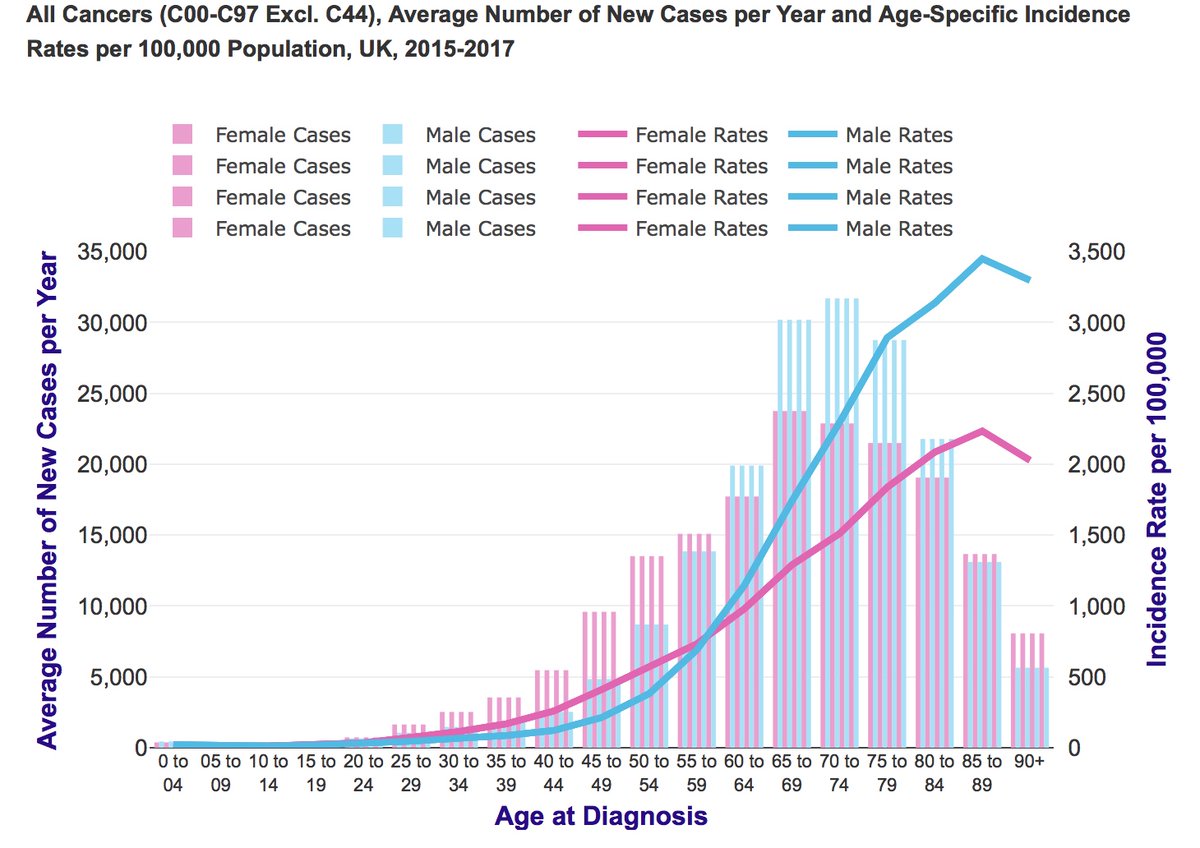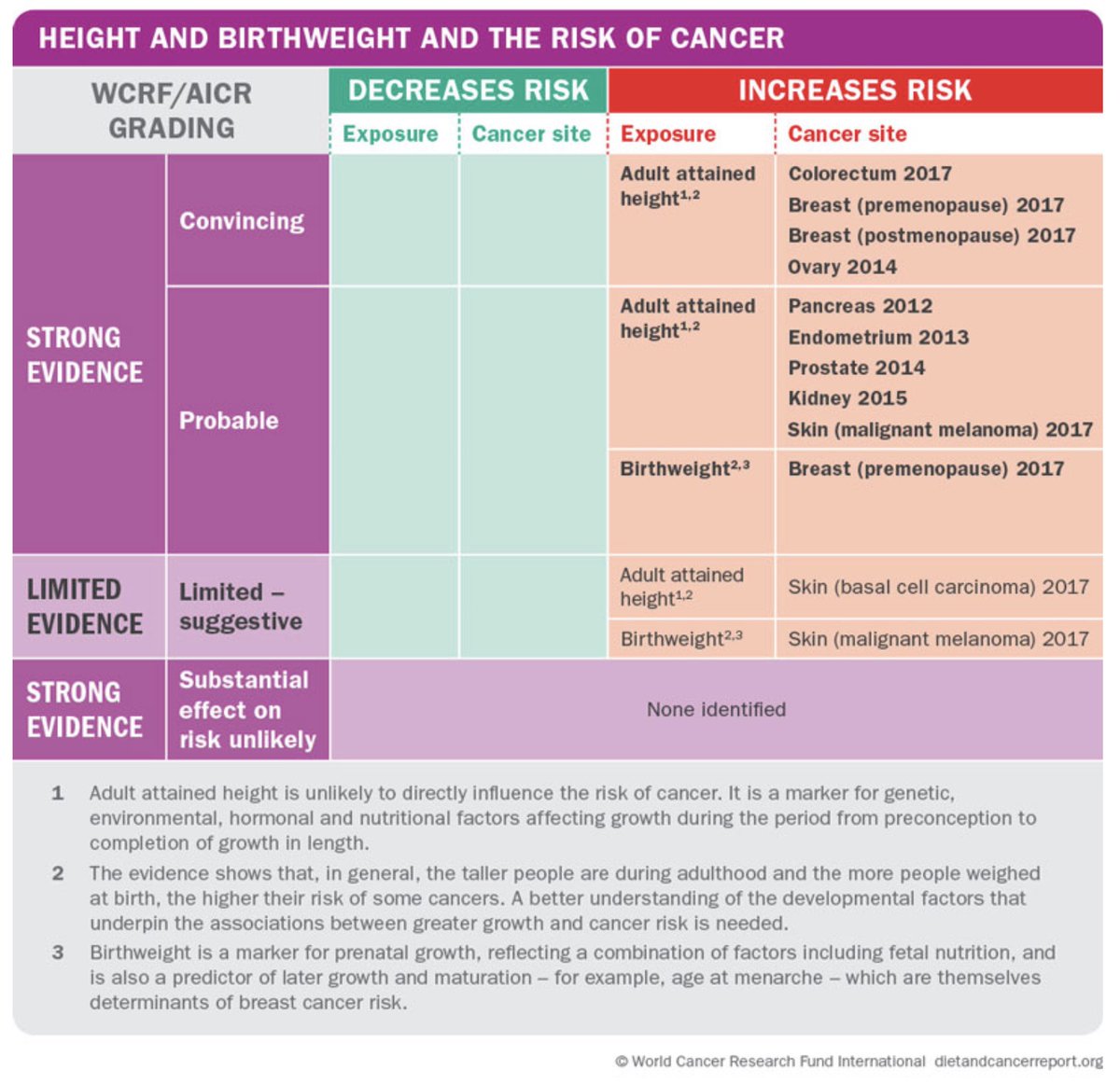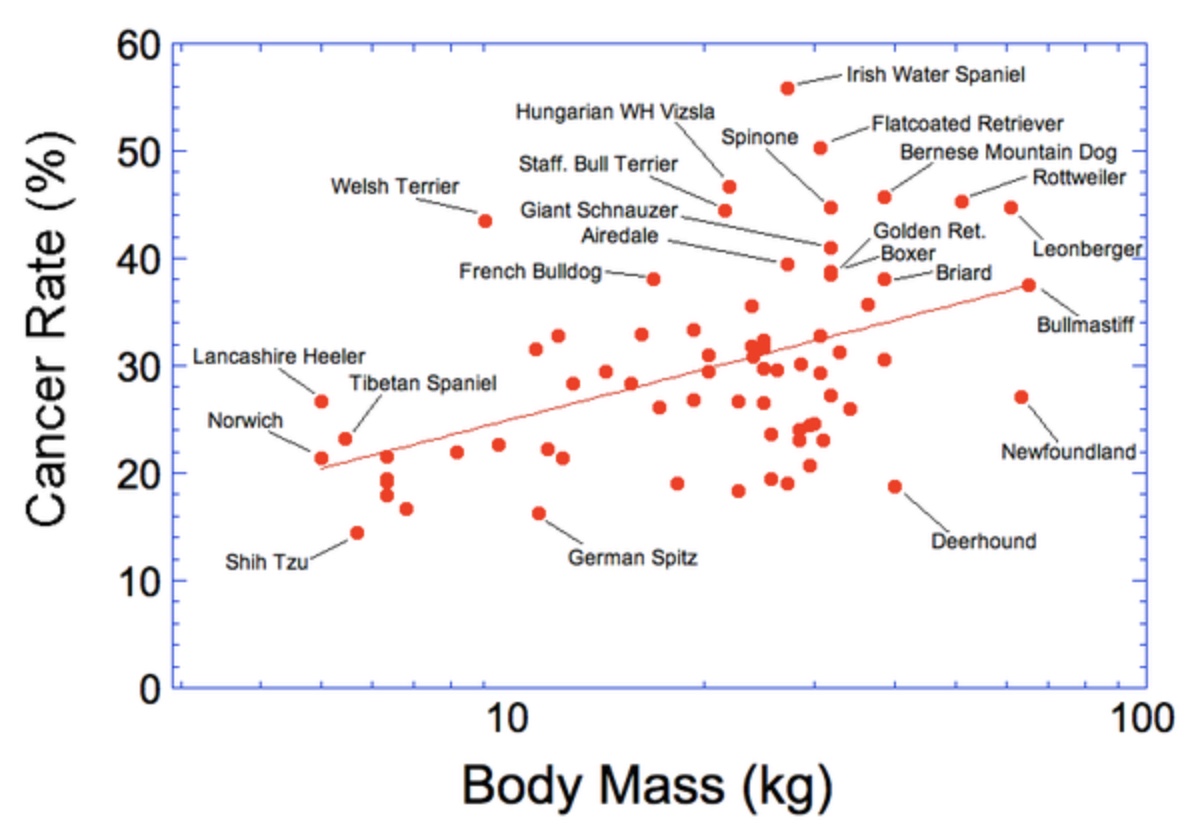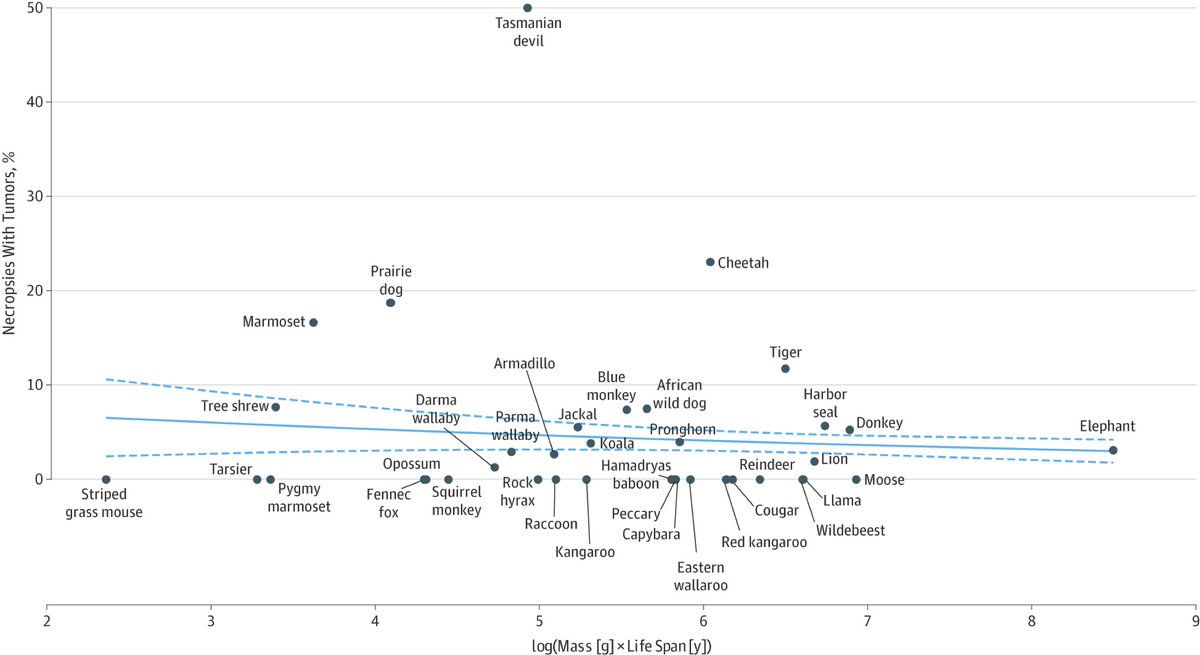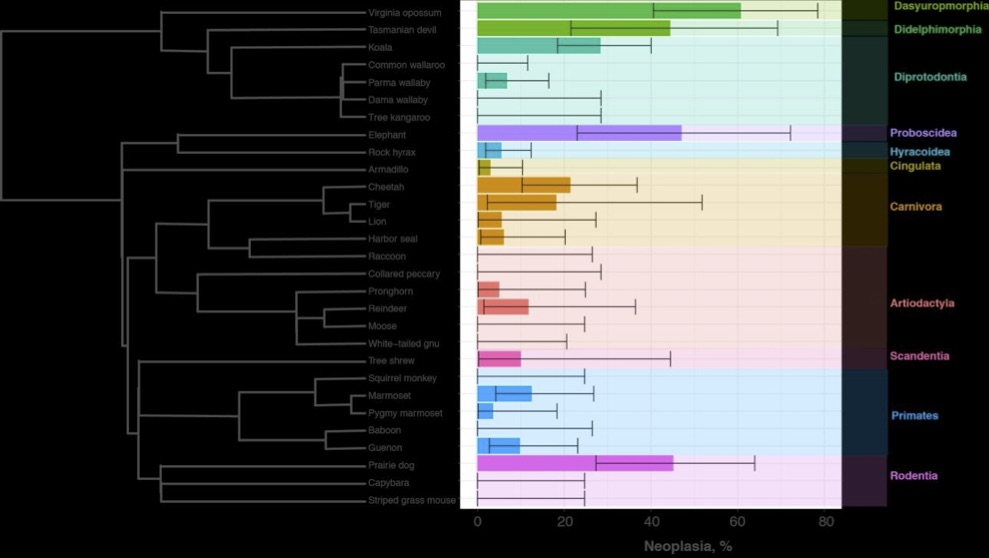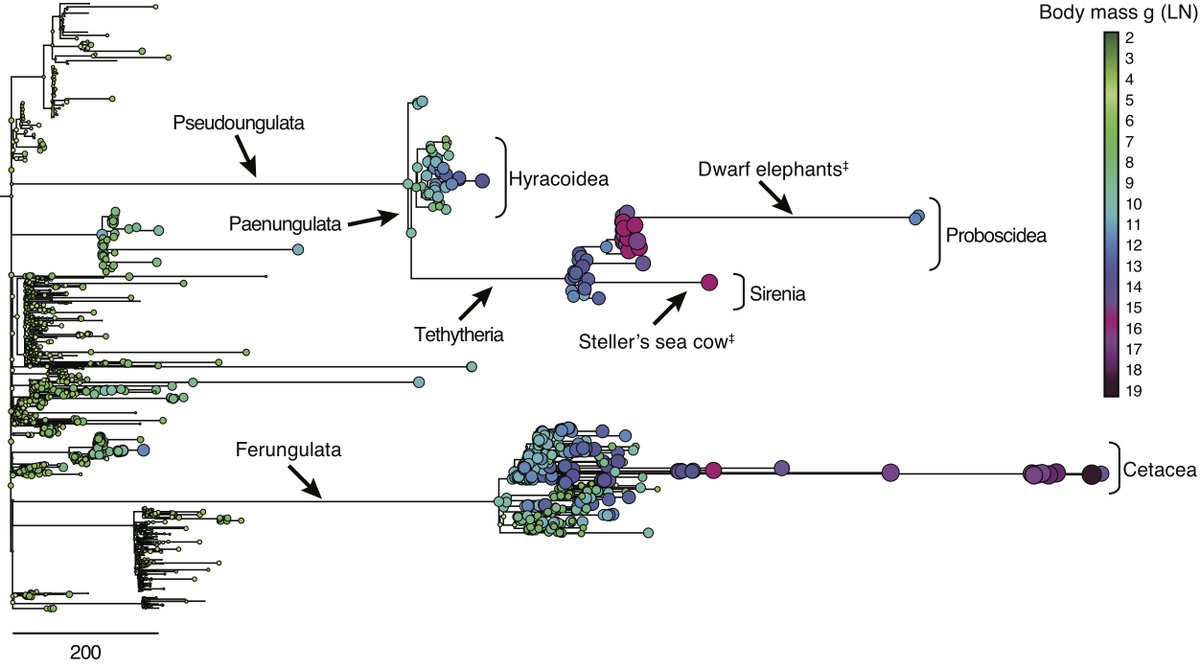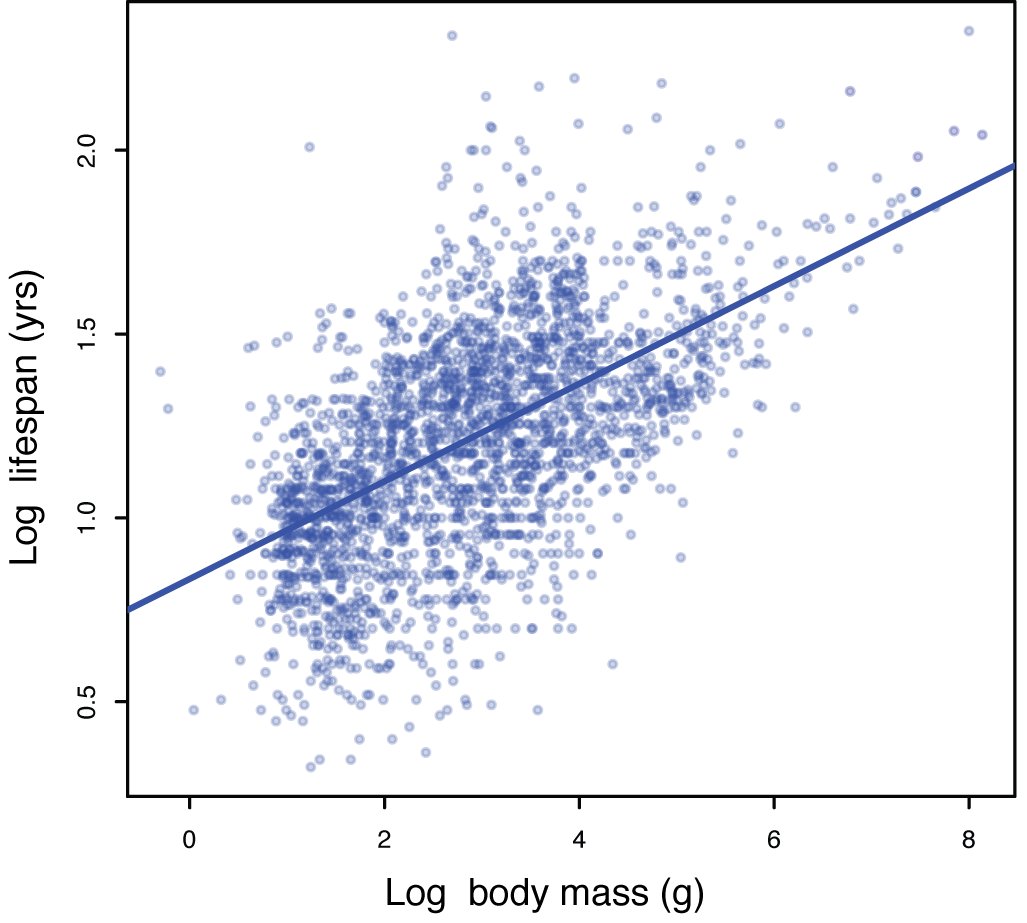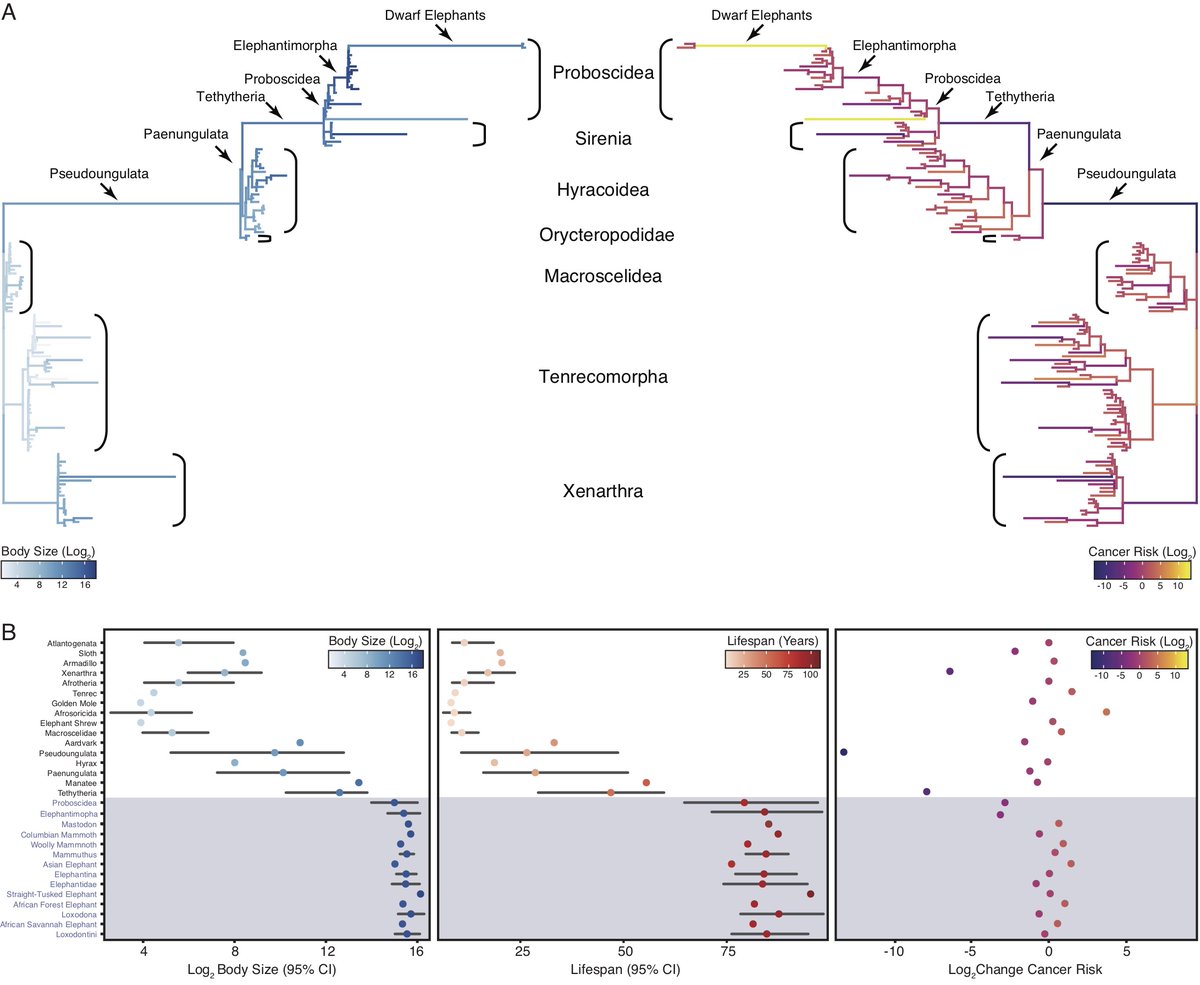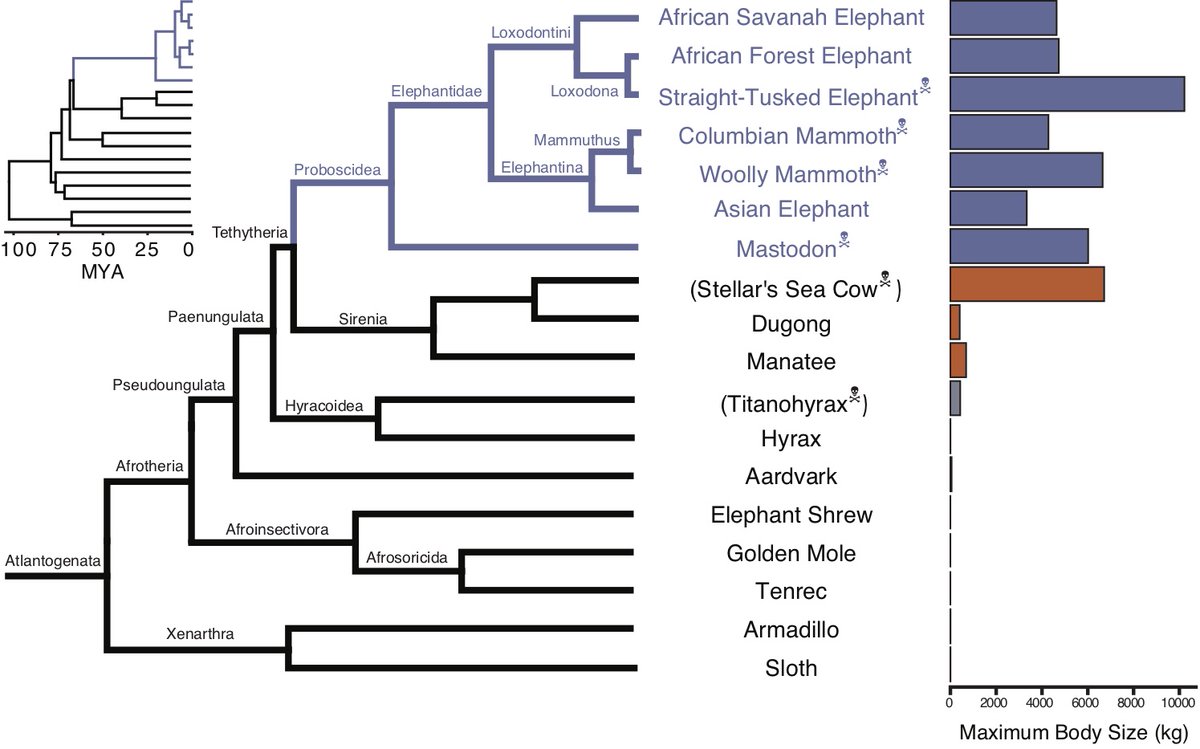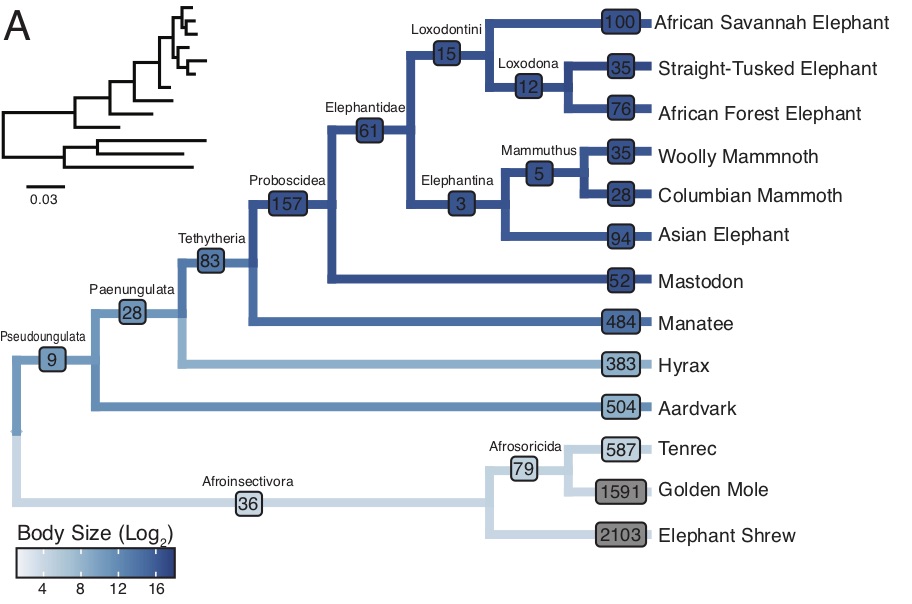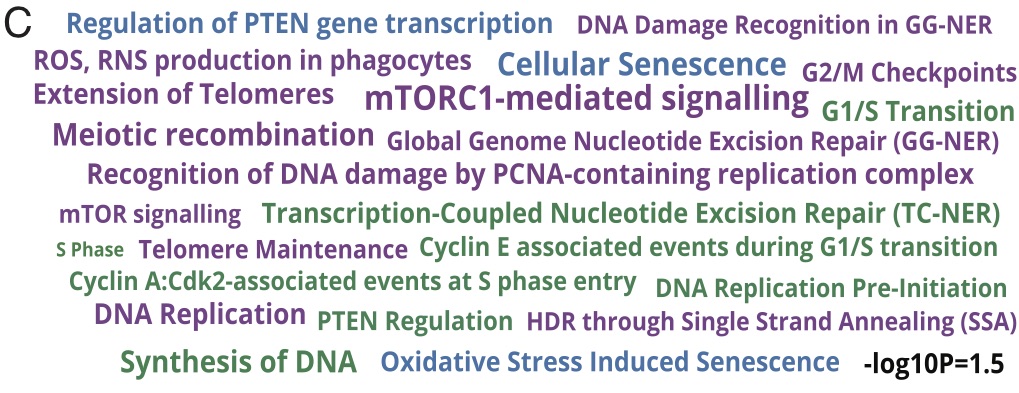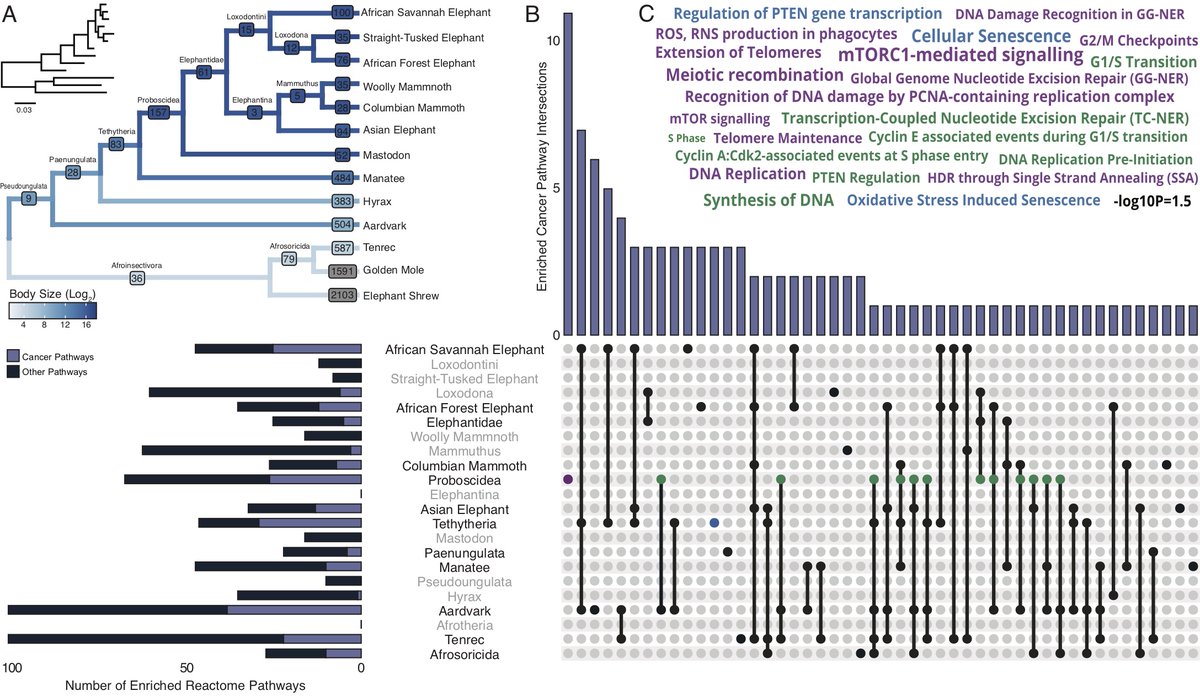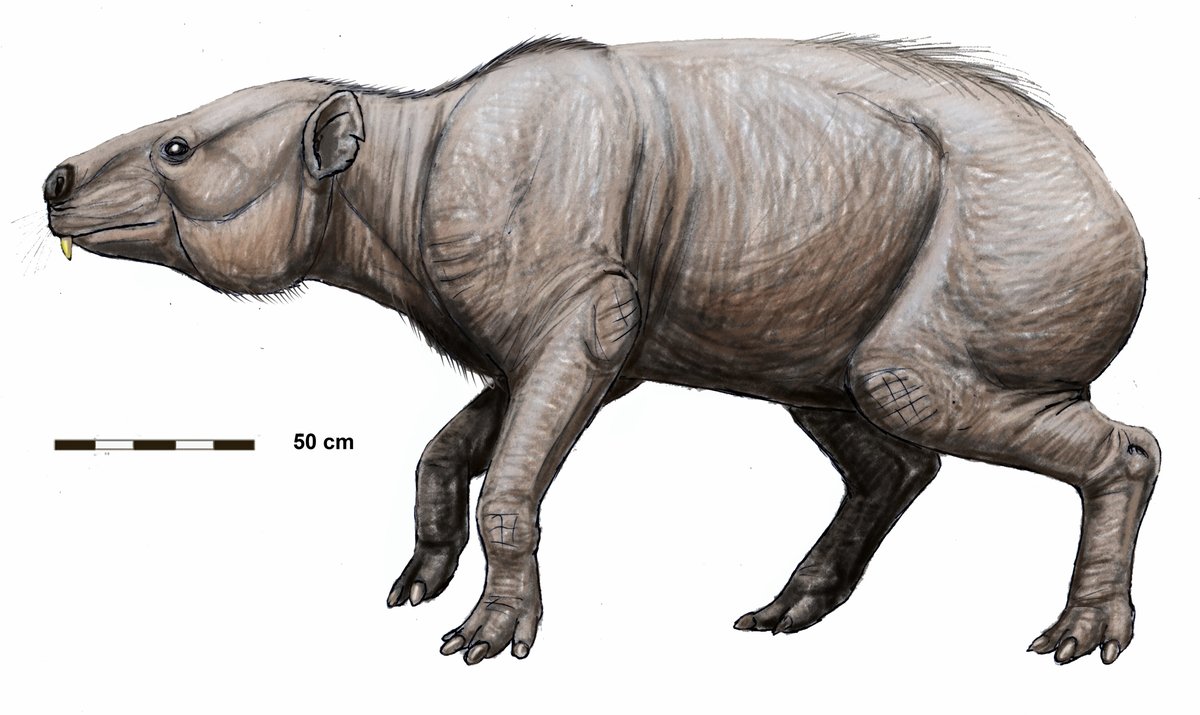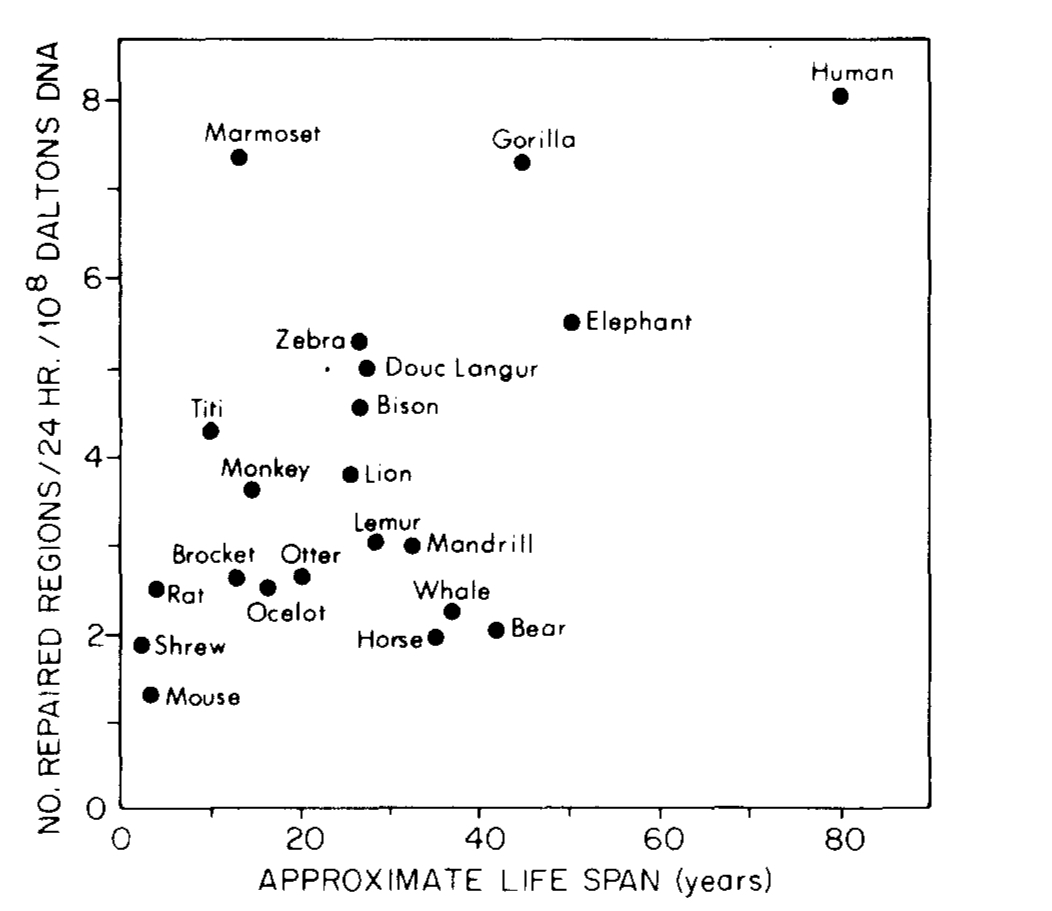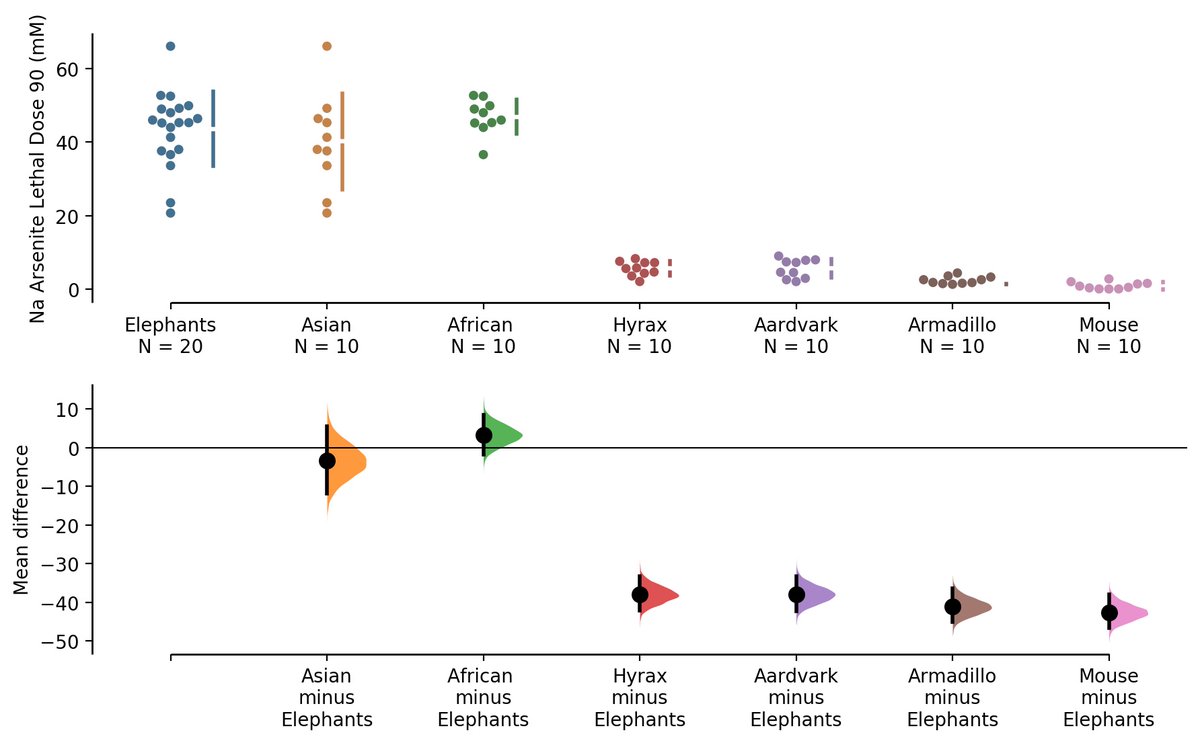Behold! Our latest @biorxivpreprint #preprint in which we explore if duplication of #TumorSuppressors helped #elephants crush their risk of #cancer as they evolved large body sizes #PetosParadox #EvMed #EleFunFactFriday #TheMoreYouKnow
crush their risk of #cancer as they evolved large body sizes #PetosParadox #EvMed #EleFunFactFriday #TheMoreYouKnow https://twitter.com/biorxiv_evobio/status/1304306439020843009
https://twitter.com/biorxiv_evobio/status/1304306439020843009
 crush their risk of #cancer as they evolved large body sizes #PetosParadox #EvMed #EleFunFactFriday #TheMoreYouKnow
crush their risk of #cancer as they evolved large body sizes #PetosParadox #EvMed #EleFunFactFriday #TheMoreYouKnow https://twitter.com/biorxiv_evobio/status/1304306439020843009
https://twitter.com/biorxiv_evobio/status/1304306439020843009
The theory here is straightforward, if all cells in all species have the same probability of turning cancerous then large-bodied species (which have more cells than small ones) should have more cancer than small bodied species...
The logic is much the same for lifespan, if the probability of a cell turning cancerous is just the waiting time till acquiring cancer causing mutations, then species with long lifespans should have more cancer than species with shorter ones...
Within species these expectations are (mostly) true, for example, the incidence of cancer increase with age in humans
https://www.cancerresearchuk.org/health-professional/cancer-statistics/incidence/age#heading-Zero
https://www.cancerresearchuk.org/health-professional/cancer-statistics/incidence/age#heading-Zero
Taller humans also get more cancer than those of average height, conversely short people get less cancer – but it obviously complicated for humans for lots of reasons...
https://www.wcrf.org/dietandcancer/exposures/height-birthweight
https://www.wcrf.org/dietandcancer/exposures/height-birthweight
But it's also a trend also observed in dogs, the bigger the breed the more likely to develop cancer (yes yes, I know we domesticated dogs and that really messed them up, but still....)
https://www.instituteofcaninebiology.org/blog/do-dogs-have-more-cancer-than-other-mammals
https://www.instituteofcaninebiology.org/blog/do-dogs-have-more-cancer-than-other-mammals
So we have some theory that predicts a positive correlation between body size, lifespan and cancer risk and evidence of such a correlation within species...But, between species there is no correlation between either body size or lifespan and cancer risk!
https://jamanetwork.com/journals/jama/fullarticle/2456041
https://jamanetwork.com/journals/jama/fullarticle/2456041
Additional work by @amy_boddy @cmaley et al. similarly found no association between lifespan or body mass and the prevalence of cancer across species...
https://academic.oup.com/emph/advance-article/doi/10.1093/emph/eoaa015/5843791
https://sites.duke.edu/clubevmed/archives/
https://academic.oup.com/emph/advance-article/doi/10.1093/emph/eoaa015/5843791
https://sites.duke.edu/clubevmed/archives/
So what's up with that? Well, big long lived things must have evolved reduced cancer risk. The lack of correlation between body size/longevity and cancer risk across species was first noticed in the 1950-60's by several people...
But as R. Peto's says: "As my name began with P, the problem of the approximate irrelevance of mammalian body size and lifespan to cancer risk happened to become known alliteratively as Peto's paradox...
...but could more appropriately have become known as Doll's dilemma [doi:10.2307/2343871] or Cairns' conundrum [doi:10.1038/255197a0], as both of them had emphasized how important it was to understand this properly."
https://royalsocietypublishing.org/doi/full/10.1098/rstb.2015.0198
https://royalsocietypublishing.org/doi/full/10.1098/rstb.2015.0198
That's where @TheMainManManny comes in, we wondered if particular species were exemplars for the evolution large bodies (and thus reduced cancer risk). We started off by estimating rates of body mass change across Eutherian (Placental) mammals to see if some lineages stood out...
Some lineages stood out, obviously Cetaceans (

 ) but also elephants and their extinct relatives (Proboscideans)...In this tree branch lengths are proportional to rates of body mass change nodes are log body mass...
) but also elephants and their extinct relatives (Proboscideans)...In this tree branch lengths are proportional to rates of body mass change nodes are log body mass...


 ) but also elephants and their extinct relatives (Proboscideans)...In this tree branch lengths are proportional to rates of body mass change nodes are log body mass...
) but also elephants and their extinct relatives (Proboscideans)...In this tree branch lengths are proportional to rates of body mass change nodes are log body mass...
A few studies have explored the genomic basis for the evolution of large bodies and long lifespans in whales, including those by @evilsmaug @tmarquesbonet @cmaley @jpsenescence, so we focused on the Proboscidean lineage...
https://pubmed.ncbi.nlm.nih.gov/31070747/ https://pubmed.ncbi.nlm.nih.gov/25565328/
https://pubmed.ncbi.nlm.nih.gov/31070747/ https://pubmed.ncbi.nlm.nih.gov/25565328/
Since we had ancestral reconstructions of body mass, and body mass and lifespan are well correlated, we could estimate intrinsic cancer risk (thanks to some math provided by Peto)...As expected, as species get big (and longer lived) their intrinsic risk of cancer decreases
Which is cool and all, but what may be the genetic basis for this reduced cancer risk? Previous studies have suggested lots of ways to reduce cancer risk (looking at you Naked Mole Rats)...
We and others have used candidate gene approaches to explore whether elephant genomes encode extra copies of tumor suppressors ...Seems like they do
https://pubmed.ncbi.nlm.nih.gov/26447779/
https://pubmed.ncbi.nlm.nih.gov/27642012/
https://pubmed.ncbi.nlm.nih.gov/26056366/ https://doi.org/10.1093/molbev/msaa125
https://pubmed.ncbi.nlm.nih.gov/26447779/
https://pubmed.ncbi.nlm.nih.gov/27642012/
https://pubmed.ncbi.nlm.nih.gov/26056366/ https://doi.org/10.1093/molbev/msaa125
But happens if we're agnostic and ask a general question: Are gene duplicates in the elephant lineage enriched for those with #TumorSuppressor functions?
Thanks to living in the genomic era we could assemble a collection genomes from living and exinct Proboscideans (elephants, mammoths, and mastodons oh my!) and smaller bodied species to which the big species are closely related (sadly no Stellar's or Titanohyrax genomes yet)...
Then we used a reciprocal best hit BLAT approach to estimate copy numbers for "all" genes, and maximum likelihood to infer ancestral copy numbers across the tree. We identified a bunch of duplicates, including 157 in the Proboscidean stem-linage (common ancestor)...
What do these duplicates do??? Well, lot's of things (so many odorant receptors! Let's ignore those), but they are enriched in pathways with functions that related to cancer biology (the purple ones in this WordCloud)...
But, it turns out that duplication of genes with putative #TumorSuppressor functions is kinda common not just in large bodied Proboscideans, but lots of their relatives (Afrotheria) as well. Ugh, so what does that mean???
We speculate that duplication of #TumorSuppressor genes is common in Afrotheria, which may underlie the repeated evolution large bodied species in this group, like Stellar's sea cow and Titanohyrax
https://en.wikipedia.org/wiki/Titanohyrax
https://en.wikipedia.org/wiki/Steller%27s_sea_cow
https://en.wikipedia.org/wiki/Titanohyrax
https://en.wikipedia.org/wiki/Steller%27s_sea_cow
But some genes are uniquely duplicated in the Proboscidean stem-lineage and they function in ways that likely contribute to some of the remarkable anti-cancer phenotypes of elephant cells (they dont let me irradiate elephants, their cells however, we routinely torture)....
Like elephant cells grow really well in a dish, unless you in expose them to DNA damage. Like even a little DNA damage and they just up and die (not even cells from other Afrotherians do that). That's probably related to having extra copies of p53... https://pubmed.ncbi.nlm.nih.gov/27642012/
Somewhat paradoxically, while elephant cells kill themselves if expose to even minuscule amounts of DNA damage, they repair that damage really fast and we see duplication of lots of DNA repair genes...
https://pubmed.ncbi.nlm.nih.gov/7266079/
https://pubmed.ncbi.nlm.nih.gov/7266079/
Elephant cells also don't seem to acknowledge the existence of oxidative stress, like are just super resistant to drugs that should kill them. Proboscideans have 2 SOD1 genes, which detoxify reactive oxygens...The oxidative stress theory of aging lives!
https://pubmed.ncbi.nlm.nih.gov/21518243/
https://pubmed.ncbi.nlm.nih.gov/21518243/
Take home: Duplication of #TumorSuppressors is both common in Afrotheria and likely contributed the evolution of augmented cancer resistance as elephants evolved large bodies and better cancer protection mechanisms....

 Read on Twitter
Read on Twitter